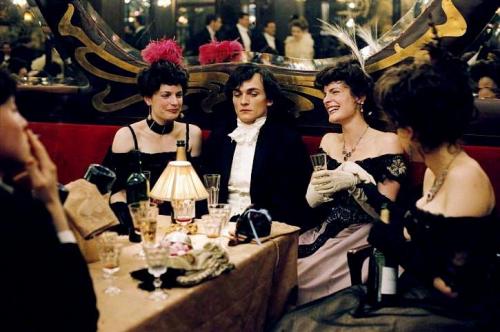Chéri - Michelle Pfeiffer finds herself in another dangerous liaison

Twenty-one years on, three of the key players behind the Oscar-winning Dangerous Liaisons have reunited for another lavish costume drama. And, incroyable mais vrai, it’s another tale of sexual intrigue in which two elegantly louche French sophisticates find that their actions have unexpectedly painful consequences.
Back in 1988, director Stephen Frears and writer Christopher Hampton’s adaptation of 18th-century author Choderlos de Laclos’ novel Les Liaisons Dangereuses saw Michelle Pfeiffer play the hapless victim of Glenn Close and John Malkovich’s jaded aristocratic libertines on the eve of the French Revolution.

This time the source is a pair of novels by Colette and the setting is Paris at the turn of the 20th Century - and Pfeiffer’s character couldn’t be more different from the devout and faithful bourgeois wife she played in the earlier film. Léa de Lonval is a former grande horizontale, a high-class courtesan who lives in Belle Époque splendour having retired from her profession with a fortune.
Now in her 40s, but still a great beauty, Léa agrees to take in hand the sentimental education of the eponymous Chéri (Rupert Friend), the dissolute 19-year-old son of former rival Mme Peloux (Kathy Bates). (Since you’re probably just about to ask: Chéri is a nickname; his real name is Fred.) Their liaison is supposed to last a matter of weeks. Instead, both Léa and Chéri are taken by surprise by the depth of their mutual passion and, as the years pass by, find it almost impossible to disentangle themselves from one another.

Dangerous Liaisons was such a triumph that Chéri’s failings are all the more disappointing. The acting’s fine. Pfeiffer is fabulous and Friend (Keira’s main squeeze) does a good job of conveying Chéri’s foppish petulance. The trouble is, though, that Chéri is such a spoilt brat, and such a passive drip, that it’s hard to care whether or not his relationship with Léa survives.
And if the viewer can’t get emotionally involved it means there’s no chance of achieving the sense of danger and suspense that made Dangerous Liaisons so gripping. Nor does the new movie have much in the way of the earlier film’s deliciously barbed wit, despite a sprinkling of catty put-downs by the story’s cast of demimondaines. True, the period detail is gorgeous, but all the sumptuousness on display seems to make the action ponderous, and not even the droll voice over provided, uncredited, by Frears can gee things along.
The film’s leisureliness did give me the opportunity, however, to ponder the remarkable parallels between the plight of Belle Époque courtesans and their nearest contemporary counterparts - Hollywood actresses: pampered, indulged, astonishingly wealthy, but cruelly haunted by fading beauty and the passing years.
The latest updates, reviews and unmissable series to watch and more!
On general release from 8th May
A film critic for over 25 years, Jason admits the job can occasionally be glamorous – sitting on a film festival jury in Portugal; hanging out with Baz Luhrmann at the Chateau Marmont; chatting with Sigourney Weaver about The Archers – but he mostly spends his time in darkened rooms watching films. He’s also written theatre and opera reviews, two guide books on Rome, and competed in a race for Yachting World, whose great wheeze it was to send a seasick film critic to write about his time on the ocean waves. But Jason is happiest on dry land with a classic screwball comedy or Hitchcock thriller.


